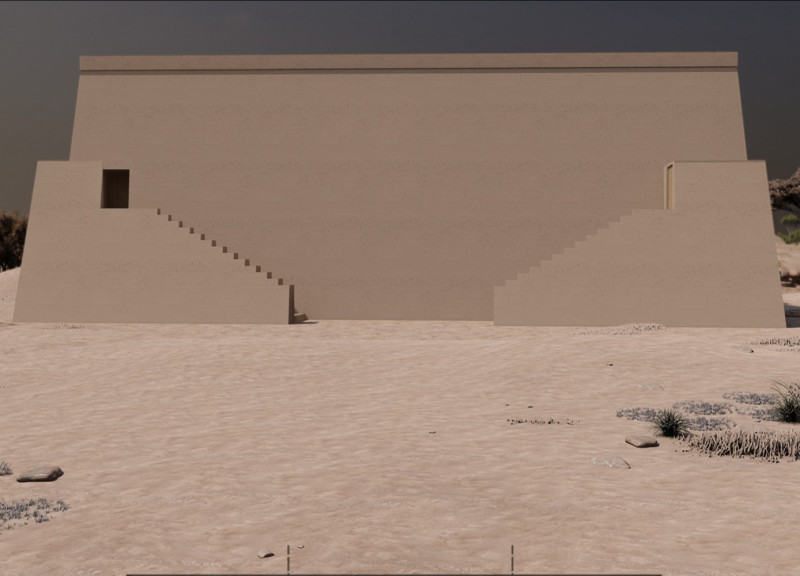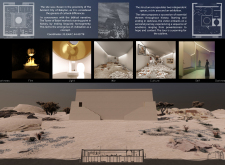5 key facts about this project
The design features a monumental façade, inspired by ancient Mesopotamian architecture, characterized by a series of ascending steps that lead to a prominent entrance. This grand entryway is designed to invite exploration and interaction. The interior layout is thoughtfully organized to accommodate various exhibition spaces, each linked to different thematic elements. These areas allow visitors to engage with historical narratives, creating a profound connection to the past while fostering a contemporary civic environment.
The use of materials such as stone, concrete, glass, and metal is intentional, as they serve to create an atmosphere that honors historical references while also meeting modern architectural standards. Stone offers a sense of permanence, while glass introduces transparency, fostering a connection between interior and exterior, and allowing natural light to penetrate the space. Metal accents provide a contemporary feel, bridging the old with the new.
Unique design approaches are evident throughout the project. The thematic exploration of darkness and light is not only symbolic but also influences the architectural form and spatial organization. Visitors are guided through a sensory journey that evokes reflection and emotional responses tied to cultural heritage, distinguishing this project from typical designs.
The structure emphasizes civic engagement by integrating public spaces meant for social interactions and dialogue, serving as a hub for community activities. This approach contrasts with conventional exhibition spaces that might focus solely on artifacts without considering their sociocultural importance.
This architectural design exemplifies thoughtful integration of historical context and modern aesthetic principles, addressing both functionality and user experience. To gain deeper insights into the architectural plans, sections, and ideas behind this project, readers are encouraged to explore the project presentation further. Understanding the intricate relationships between design elements enhances appreciation for the work's conceptual foundation and execution.























